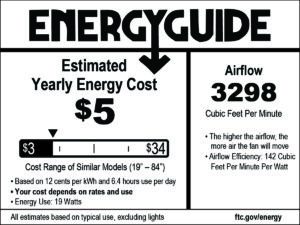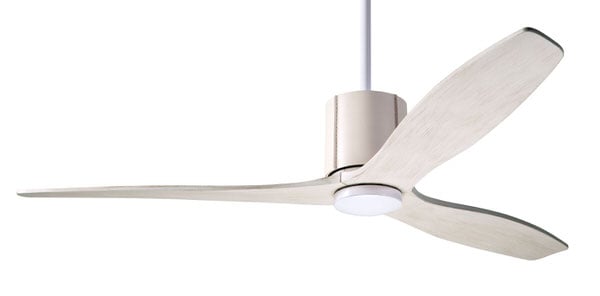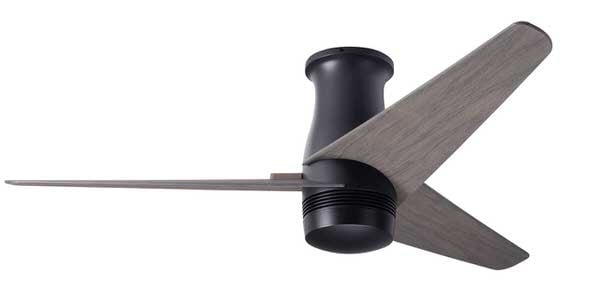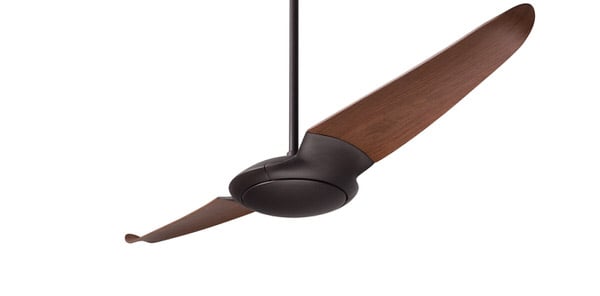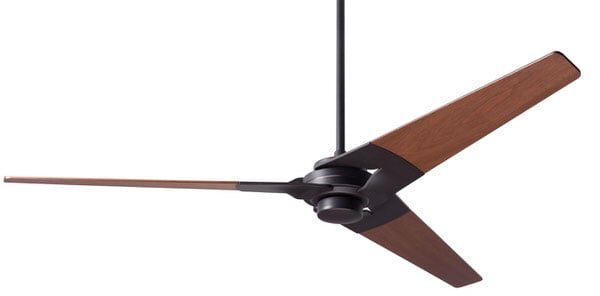Cirrus DC | 50″
Base Price: $510
Cirrus DC | 50″:
- 6-speed, reversible DC motor
- Die cast aluminum construction
- 50” span, plywood blades
- Includes 6” and 12” down rods; longer options also available
- Optional LED light: 17W, 90 CRI, 3000K, 1530 lumens (dimmable) behind opal glass diffuser; CA Title 24 (JA8) compliant
- Slope compatible up to 33°; adapter available for slopes up to 45°
- Designed by Ron Rezek
- ETL listed for dry and damp locations
- Weight: 14.0 lbs (6.4 kgs)
Cirrus DC | 50″:
High Speed Performance Data:
Based on DOE standardized test method (installed with 6″ down rod).
RPM: 220
CFM (Cubic Feet per Minute): 5,165
Watts (fan only): 28.95
CFM/Watt: 178
Energy Guide Data:
Representing weighted averages of high speed and low speed performance based on DOE/FTC standardized reporting criteria. Assumes typical use (excluding light).
Average Energy Use: 19 Watts
Average Airflow: 3,298 CFM
Yearly Energy Cost: $5.00
Average Efficiency: 142 CFM/Watt
More about Performance and Efficiency:
Ceiling fan manufacturers are required by federal law to publish an EnergyGuide label for all models in a standardized format, including watts used, cubic feet of air moved per minute (CFM), a resulting CFM per watt efficiency value and an estimated annual cost to use the product. These values are “weighted averages” of high and low speed performance and are intended to represent typical use. They are based on results from a standardized test gathered in a controlled environment and are furnished to help consumers and specifiers compare products. Because the standardized test method and the EnergyGuide format has changed over the years (with significant impacts on resulting data), be sure to only compare information which has been published based on current test methods and EnergyGuide label format. Many websites continue to provide “high speed” performance data instead of the more current “weighted averages”, making for large discrepancies. Please contact our customer support team with questions about performance data.
It is also important to recognize that in a real world installation, there are a number of variables that can affect air movement patterns and volume, including ceiling height, down rod length, room size/layout, furnishings and airflow direction. It can be challenging to rely on the reported EnergyGuide information alone to determine how the airflow might feel in a given application. Nevertheless, our EnergyGuide data shows that all Modern Fan products perform at the upper range of fans on the market.
Furthermore, while DC motor fans are reaching new levels of efficiency, it’s important to remember that all ceiling fans (AC or DC motors) are inherently efficient and use very little electricity to begin with, especially when used to offset or reduce use of air conditioning.
You might also like:
-
LeatherLuxe DC | 54″
Base Price: $770Five Finish/Leather Combinations
Solid Wood Blades in Five Finishes
Optional LED LightView All Options -
Velo Flush DC | 48″
Base Price: $535Three Fan Finishes
Eight Blade Colors
Optional LED LightView All Options -
IC/Air2 DC | 56″
Base Price: $610Three Fan Finishes
Eight Blade Colors
Optional LED LightView All Options -
Torsion | 62″
Base Price: $405Three Fan Finishes
Seven Blade Colors
Two LED Light OptionsView All Options
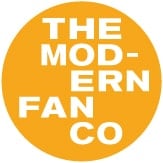
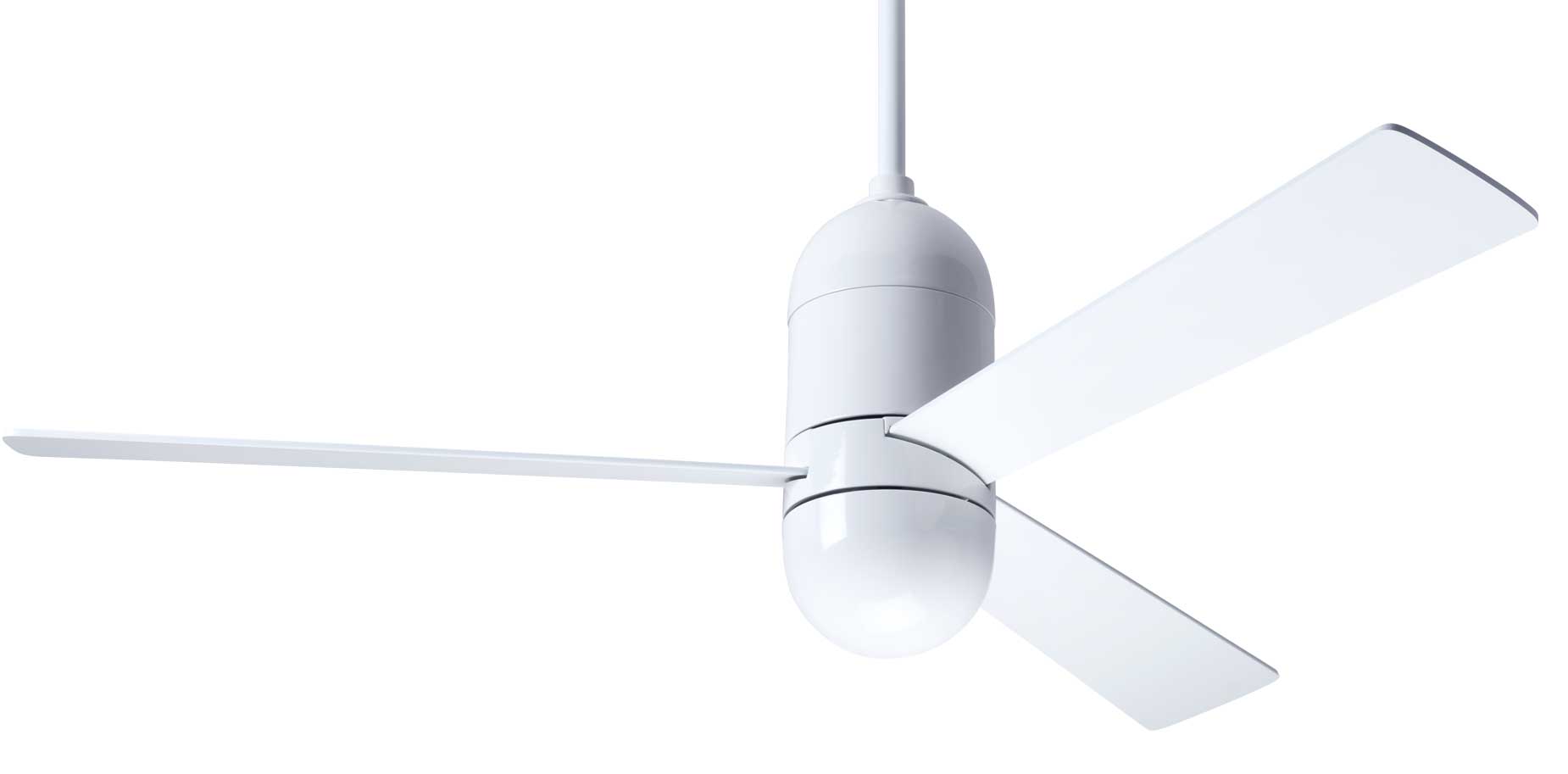
 Image Gallery
Image Gallery
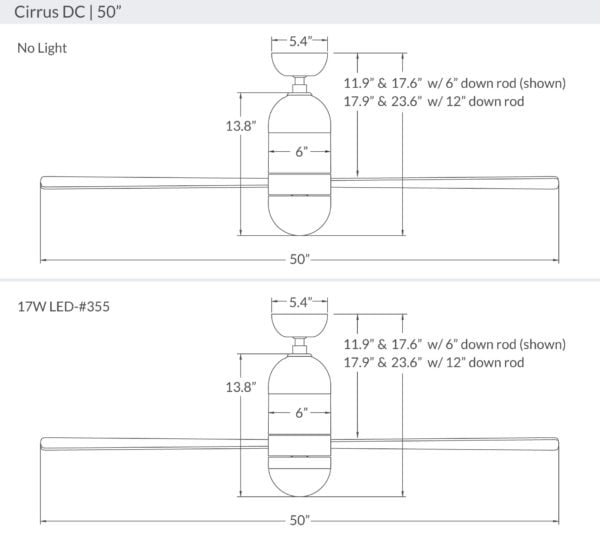 Dimensions
Dimensions
